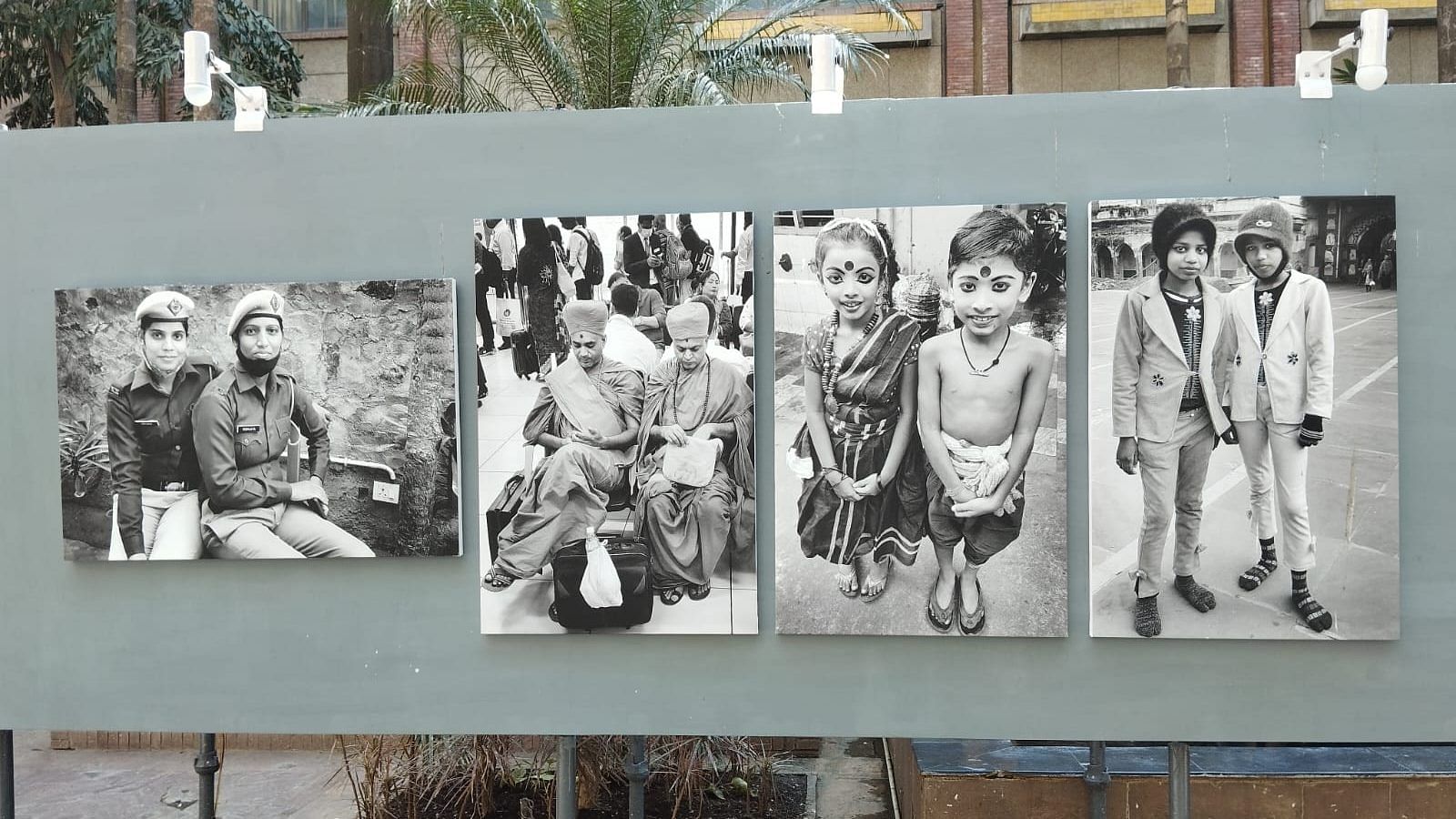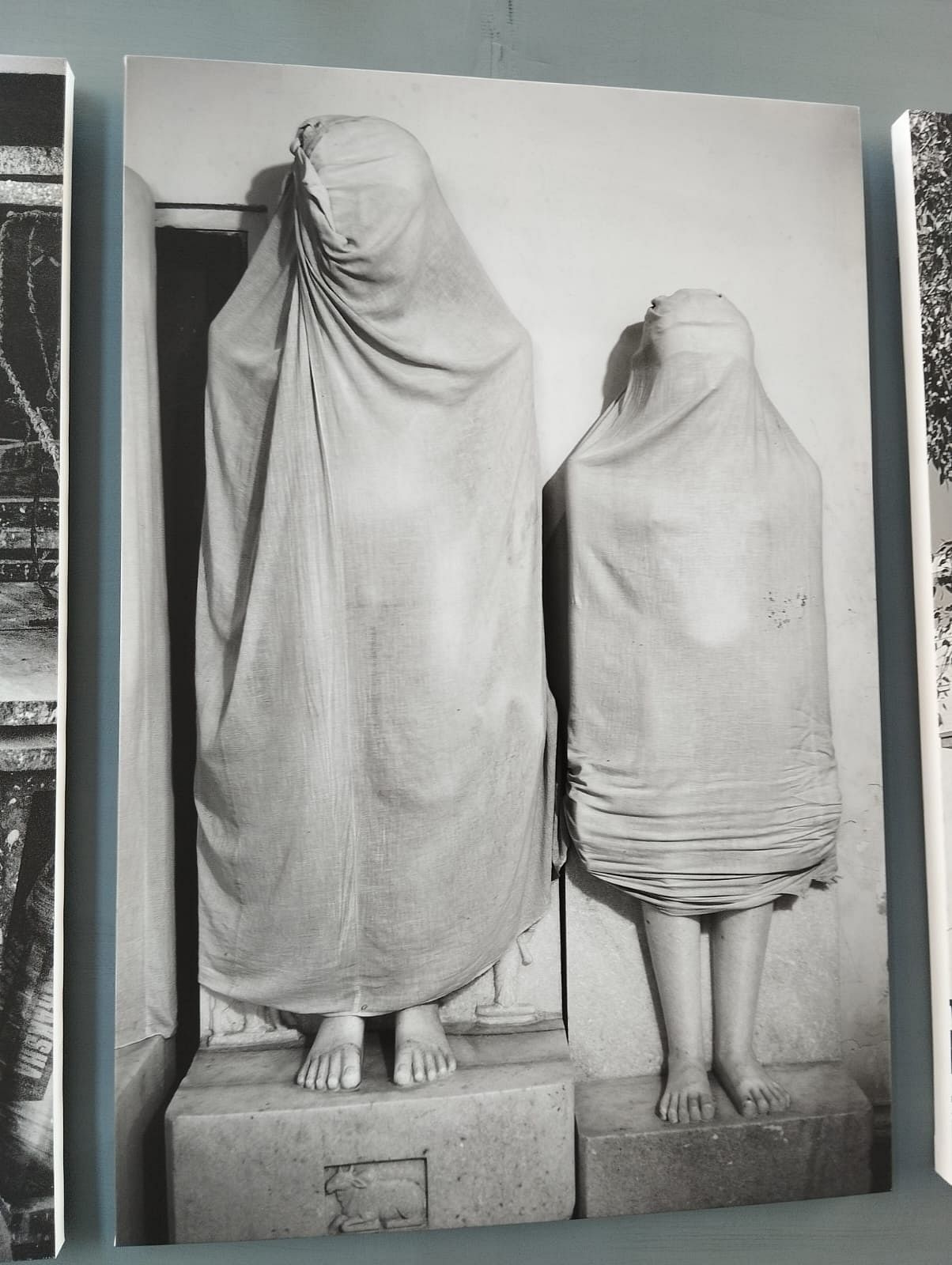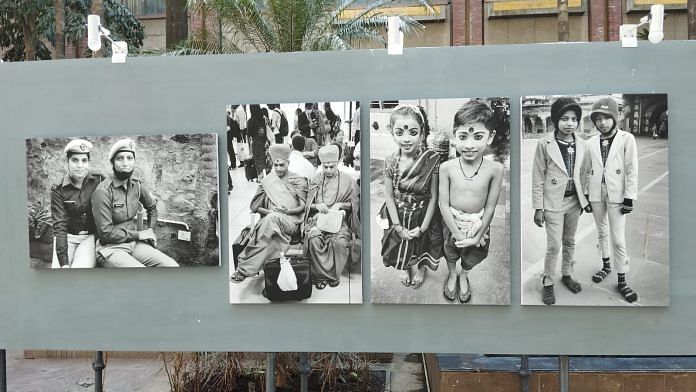New Delhi: Over the past 18 months, French Ambassador to India Emmanuel Lenain – a self-trained photographer – used his Leica 35mm camera to shoot a variety of pictures while travelling to cities like Patna, Baroda, Delhi, Ahmedabad, Visakhapatnam, and Mumbai.
The 52-year-old diplomat’s personal collection of photographs has now culminated into an exhibition at the Visual Arts Gallery in India Habitat Centre. Titled “Invisible Poetry”, the exhibition ranges from shots of public urinals to religious idols covered in white clothes.
The collection of 48 photographs is notably in black-and-white. Lenain explained this was a conscious decision and that he wanted to find “some hidden things behind the vibrancy” of Indian culture.
“Black-and-white was not an easy choice for Lenain to represent a country awash with fantastic colours,” said Alka Pande, who worked with the diplomat to curate the exhibition. Lenain, however, chose to stray from the “exotic vision” of India, “a spell to which most visitors fall prey to,” she added.
After Delhi, “Invisible Poetry” will be displayed at Kolkata’s Indian Museum in April and then at Patna’s Bihar Museum in August.
The French ambassador’s passion for photography has intersected with his experiences as a diplomat on many occasions. For example, after serving as Consul General of France in Shanghai from 2010 to 2015, a series of his photographs taken in China was exhibited at Maison Européenne de la Photographie (MEP) in Paris in 2016.
Last year, the diplomat and celebrated Indian photographer Raghu Rai jointly released a book, Through Their Eyes: Raghu Rai and Emmanuel Lenain. It featured Lenain’s photographs of India and Rai’s pictures taken in Paris.
Since the exhibition in Delhi opened to the public on 2 February, Lenain has been regularly posting glimpses on his Instagram account – where the bio describes him as “professional diplomat, amateur
Wide range of photographs
The exhibition is divided into three different sections – “The Invisible Structure of India”, “The Second Life of Objects”, and “Unnatural Landscapes”.
In the first section, one can find photographs of public urinals, light switches and movie theatre seats which are tied by a theme of symmetry and structure. In this vein, there are also pictures of Indians in pairs such as two female IPS officers or two holy men waiting at an airport.

The second section focuses more on objects, and the fact that they often acquire a life of their own once abandoned or discovered somewhere else. These include snaps of a police officer’s uniform or deity idols that have either been discarded or stored away.
For example, one photograph, taken in Chandigarh, shows a picture of two religious idols covered in white cloth, with only their feet visible. “It is a strange habit to carve or cast statues and immediately hide or tie them: are we so scared of freedom?” Lenain asks.

“Objects often acquire a life of their own, at times intriguing, ominous, or grotesque. There are plenty of these across India, where one often feels like one is witnessing a scene from a film noir,” described Lenain.
The exhibition’s final section depicts weird and wonderful landscapes across India — from a park bench to a tree growing out of a ramshackled house. Lenain describes them as “endangered nooks of nature” found in the megacities of India.

The title of the exhibition – “Invisible Poetry” – appears to be a reference to the unique aspects of Indian society and landscapes that are often clubbed into the mundane.
In a note that serves as a sort of prelude to the exhibition, Lenain explains: “I can only hope that I have ultimately succeeded in depicting a unique aspect of this wonderful country that sets it apart from all others, which is the invisible poetry that lies within the most prosaic.”
Lenain’s exhibition comes as India and France celebrate 75 years of bilateral relations.
(Edited by Prashant)






